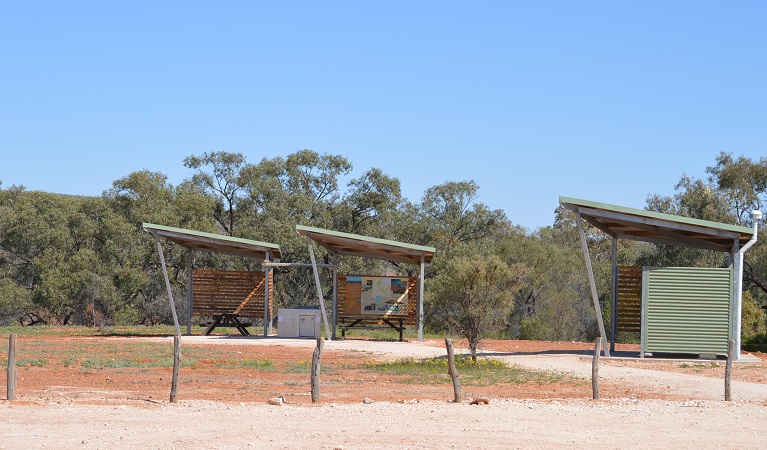Peery Lake picnic area
Paroo-Darling National Park
Overview
A birdwatching paradise when Peery Lake is full, stop for a barbecue or a short walk at Peery Lake picnic area – in the northern section of Paroo-Darling National Park.
- Type
- Picnic areas
- Where
- Paroo-Darling National Park in Outback NSW
- Accessibility
- Medium
- Please note
- Paroo-Darling Visitor Centre is a good place to pick up maps and information about the park
- The closest towns are White Cliffs (55km south-west) and Wilcannia (110km south)
- Peery Lake is in an isolated part of the region and you should have provisions for yourself and passengers for at least a full-day.
- Your vehicle should be in good condition and fuel up before departure from the last town.
If you’re looking for a peaceful spot to unwind on your outback adventure, cook up a barbecue and stretch your feet at Peery Lake picnic area. You’ll have a view of Peery Lake, and maybe a surprise visit from local kangaroos and emus enjoying a feed.
When Peery Lake is full, it transforms into a spectacular inland playground for water birds, and you can take a canoe out for a paddle. Even when it’s dry, the lake bed is home to freshwater plants and animals. Hear the calls of pink cockatoos, mulga parrots and red-backed kingfishers, and you might even spot the elusive grey falcon if you’re lucky.
May to November is the best time to visit, especially when winter rains bring a wonderful show of wildflowers in spring.
Peery Lake is a significant place to the Barkandki Aboriginal Traditional Owners, and you'll find Aboriginal sites are scattered all around the lake's edge and surrounding cliffs.
Map
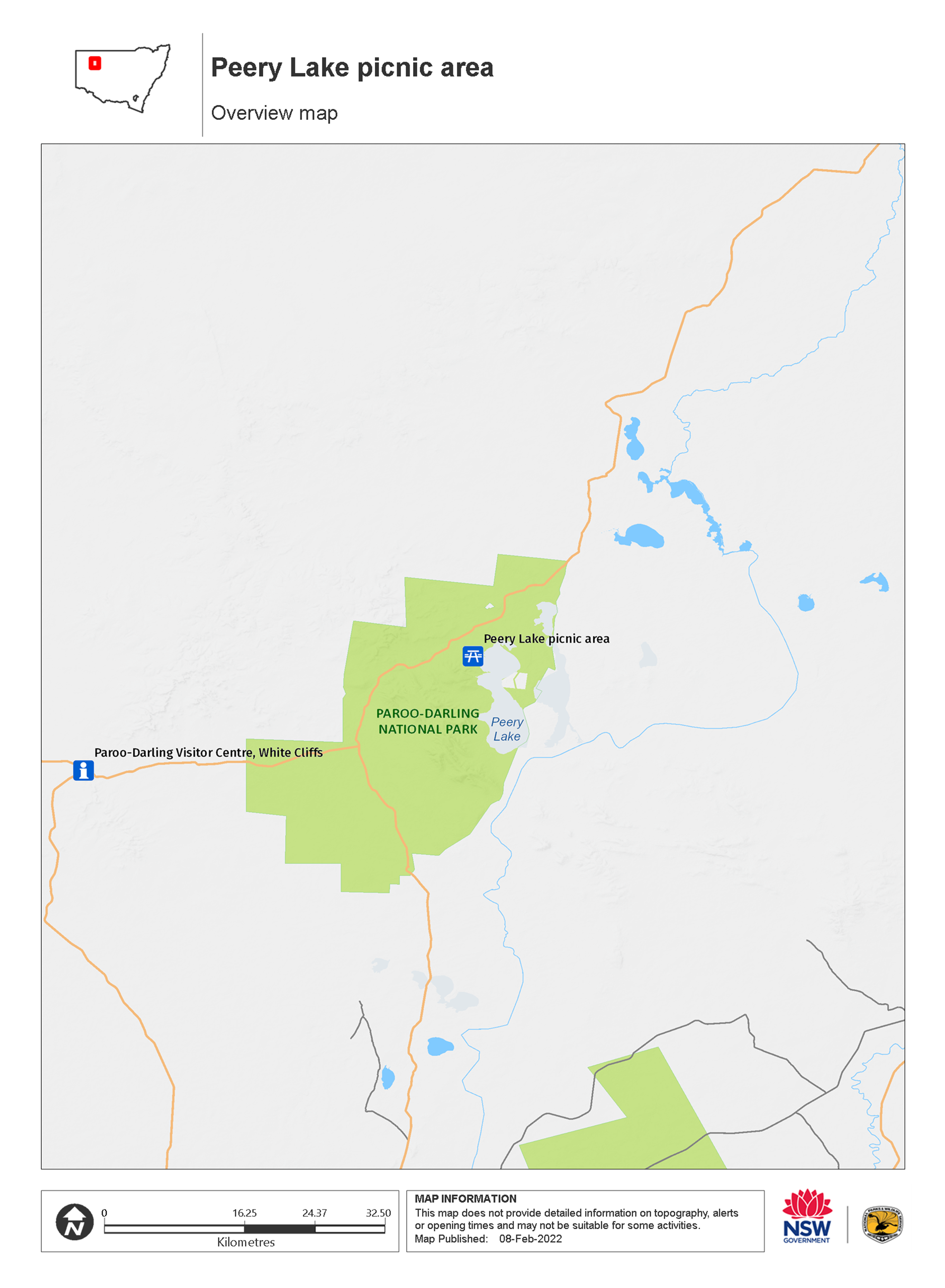
Map legend

Local alerts
For the latest updates on fires, closures and other alerts in this area, see https://uat.nswparks.cloud/things-to-do/picnic-areas/peery-lake-picnic-area/local-alerts
General enquiries
- National Parks Contact Centre
- 7am to 7pm daily
- 1300 072 757 (13000 PARKS) for the cost of a local call within Australia excluding mobiles
- parks.info@environment.nsw.gov.au
Park info
- in Paroo-Darling National Park in the Outback NSW region
Paroo-Darling National Park is always open but may have to close at times due to extreme weather or fire danger.
Visitor info
All the practical information you need to know about the Peery Lake picnic area.
Maps and downloads
Visitor centre
-
Paroo-Darling Visitor Centre, White Cliffs
2 Johnston Street, White Cliffs NSW 2836 - Monday to Friday, 8.30am to 4.30pm.
Learn more
Peery Lake picnic area is in Paroo-Darling National Park. Here are just some of the reasons why this park is special:
A unique and diverse ecosystem
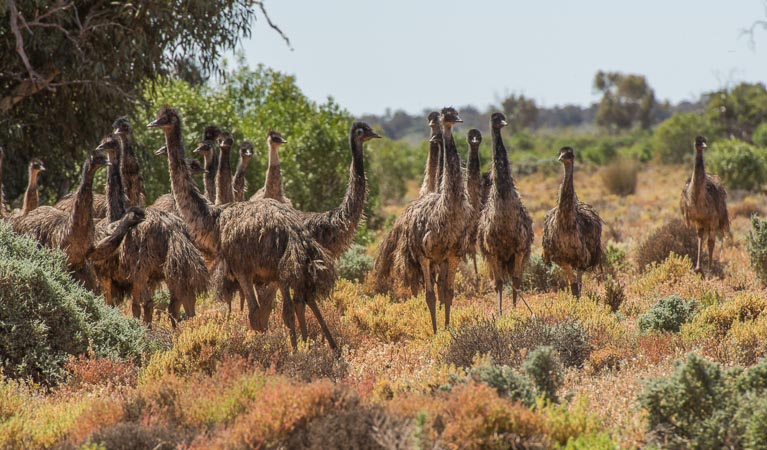
The Paroo Overflow and its associated wetlands sustain a unique ecosystem, including such threatened species as the freckled duck and blue-billed duck. You may also see black-breasted buzzards, pink cockatoos, pied honeyeaters and any one of 55 bird species that visit the lakes. Peery Lake, a major part of the system, is part of an internationally significant wetland and protected under the Ramsar Convention.
Aboriginal heritage
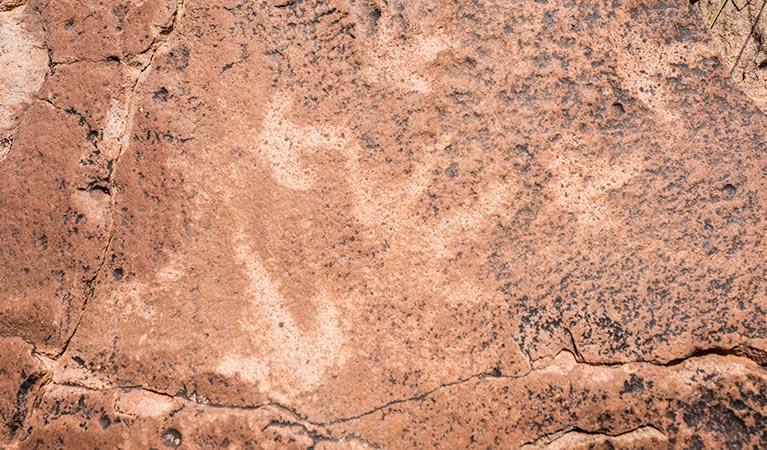
The Paakantyi and Ngiyeempaa People have traditionally made this area their home. The park is a historically and culturally important site: with its hearths, quarries and specialised microblade occupation sites, the area provides significant information about changing technologies and ways of life over the last 10,000 years.
European history
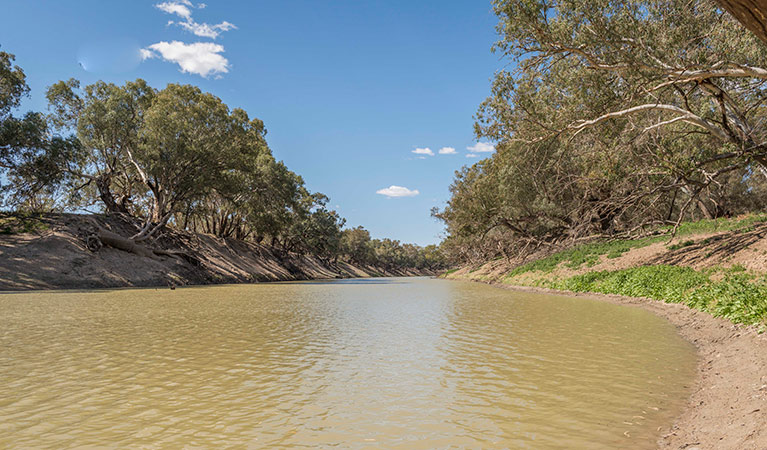
Pastoralists were also attracted to the banks of the Darling River. As well as water, it provided a major transport corridor. Riverboats began navigating the system in the 1850s, and Cobb and Co also ran several routes through this important pastoral region.
- Darling River Run tag-along tour Follow the Darling River on a 15-day driving trip with Xpedition Tagalong Tours. Explore the incredible attractions in Outback NSW as you journey from Lightning Ridge through Broken Hill to Wentworth.
Plants and animals protected in this park
Animals
-

Wedge-tailed eagle (Aquila audax)
With a wingspan of up to 2.5m, the wedge-tailed eagle is Australia’s largest bird of prey. These Australian animals are found in woodlands across NSW, and have the ability to soar to heights of over 2km. If you’re bird watching, look out for the distinctive diamond-shaped tail of the eagle.
-

Emu (Dromaius novaehollandiae)
The largest of Australian birds, the emu stands up to 2m high and is the second largest bird in the world, after the ostrich. Emus live in pairs or family groups. The male emu incubates and rears the young, which will stay with the adult emus for up to 2 years.
-

Red kangaroo (Macropus rufus)
The red kangaroo is one of the most iconic Australian animals and the largest marsupial in the world. Large males have reddish fur and can reach a height of 2m, while females are considerably smaller and have blue-grey fur. Red kangaroos are herbivores and mainly eat grass.
Plants
-

Mulga (Acacia aneura)
Mulga are hardy Australian native plants found throughout inland Australia. With an unusually long tap root, the mulga is able to withstand long periods of drought.
-

Saltbush (Atriplex nummularia)
A hardy Australian native plant, the saltbush is a small spreading shrub that can withstand dry salty soils such as those found in the desert plains of western NSW. It is grey-white in colour and has small spear-shaped succulent leaves. It flowers from December to April.
Environments in this park
Education resources (1)
General enquiries
- National Parks Contact Centre
- 7am to 7pm daily
- 1300 072 757 (13000 PARKS) for the cost of a local call within Australia excluding mobiles
- parks.info@environment.nsw.gov.au
Operated by
- Broken Hill office
- Monday to Friday, 8.30am to 4.30pm. Closed 1pm to 2pm.
- 08 8084 2880
- npws.westdarling@environment.nsw.gov.au
- 183 Argent Street, Broken Hill NSW 2880
Park info
- in Paroo-Darling National Park in the Outback NSW region
Paroo-Darling National Park is always open but may have to close at times due to extreme weather or fire danger.
What's nearby:
Things to do (35)
- 4WD touring (3)
- Aboriginal culture (13)
- Birdwatching and wildlife encounters (11)
- Canoeing/paddling (3)
- Cultural heritage (5)
- Fishing (1)
- Historic heritage (12)
- Picnics and barbecues (9)
- Road trips and car/bus tours (7)
- Sightseeing (7)
- Swimming (2)
- Visitor centres (4)
- Walking (14)
- Wildflowers (seasonal) (3)

